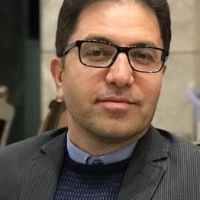Cultural Continuity in Modern Iraqi Painting between 1950- 1980
Author(s):
Abstract:
Since the early years of 1950, which represent the development period of modern Iraqi art, the return to the roots movement has been an impartible mainstream in Iraq. The first generation of modern artists like Jewad Salim and Shakir Hassan Al-Said considered cultural continuity and the link between tradition and modernity and inspiration from heritage1 as the main essence of their artistic creation and bequeathed this approach to their next generation. Having analyzed and described a selection of artworks of modern Iraqi artists, this paper discusses the evolution of modern Iraqi art, and aims to determine cultural and artistic continuity in modern paintings of Iraq. It also seeks to answer the questions that investigate the socio-cultural factors that underlie the formation of art and establish a link between traditional and modern ideas and lead to continuity in tradition. Therefore, the research hypothesis is put to scrutiny on the basis of Robert wuthnows theory. According to Wuthnow, although configuration and the objective production of this movement is rooted in the mobilization of resources, the artistic content and approach of the painting movement (i.e. the continuation of the tradition along with addressing modern ideas) is influenced by factors such as social Horizon, existing discursive context and cultural capital of the painters. Research results that are derived from historical-analytical methods reveal that modern Iraqi artists used the four Islamic, pre-Islamic or Mesopotamian, modern source and folkloric sources to create paintings which were modern and Iraqi at the same time that could be definitely called Modern Iraqi art. The impact of these mentioned sources can be seen in form and content or generally in aesthetic values of these works which are obviously traceable in large exaggerated Sumerian eyes, dark and thick tracing lines in Abbasid painting, indigenous colors and amulet, letters, Islamic calligraphy, crescent, dome, and themes of the Karbala incident. It can be asserted that the Iraqi artist depicts the forms and contents that offer a strong link to place, which is Iraq, as the place is the most important element in maintaining and preserving identity.
Keywords:
Language:
Persian
Published:
Bagh-e Nazar, Volume:14 Issue: 47, 2017
Pages:
39 to 48
magiran.com/p1684235
دانلود و مطالعه متن این مقاله با یکی از روشهای زیر امکان پذیر است:
اشتراک شخصی
با عضویت و پرداخت آنلاین حق اشتراک یکساله به مبلغ 1,390,000ريال میتوانید 70 عنوان مطلب دانلود کنید!
اشتراک سازمانی
به کتابخانه دانشگاه یا محل کار خود پیشنهاد کنید تا اشتراک سازمانی این پایگاه را برای دسترسی نامحدود همه کاربران به متن مطالب تهیه نمایند!
توجه!
- حق عضویت دریافتی صرف حمایت از نشریات عضو و نگهداری، تکمیل و توسعه مگیران میشود.
- پرداخت حق اشتراک و دانلود مقالات اجازه بازنشر آن در سایر رسانههای چاپی و دیجیتال را به کاربر نمیدهد.
In order to view content subscription is required
Personal subscription
Subscribe magiran.com for 70 € euros via PayPal and download 70 articles during a year.
Organization subscription
Please contact us to subscribe your university or library for unlimited access!



